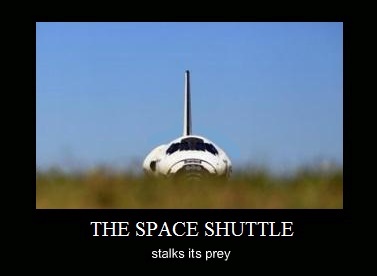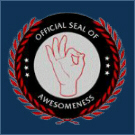Date: October 11 – 22, 1968
Crew: Commander Wally Schirra (45)Command Module Pilot Donn Eisele (38)Lunar Module Pilot Walter Cunningham (36)
Command Module Name: CM-101
Service Module Name: SM-101
Mission Distinctions: First manned mission of the Apollo program; first American 3-man mission; first live public broadcast from space.
 During 163 orbits, the crew was tasked with testing the engineering systems, firing module engines and other critical tests to see if the hardware and life-support measures would be "moonworthy."
During 163 orbits, the crew was tasked with testing the engineering systems, firing module engines and other critical tests to see if the hardware and life-support measures would be "moonworthy."Apollo 7 spent 11 days in space – more than all the Soviet missions combined at that time, and it appeared the US program was finally beginning to "pull ahead."
Apollo 7, 8, 9 and 10 each carried a lunar module pilot, even though there were no Lunar Modules yet.
It was the Wally Schirra show! A veteran of Mercury 5 & Gemini 6, he was at that time the oldest man to fly in space, and the first to fly a third mission.
It was no bed of roses, however; Schirra was against having a TV camera in the spacecraft, calling it both a distraction and invasion of privacy. NASA Director Chris Kraft was equally adamant that command modules should begin live broadcasts to the American public.
 Wally developed the first head cold in space and had to perform the first two broadcasts while congested and cranky. By day 3, he refused to air another, saying there would be no discussion.
Wally developed the first head cold in space and had to perform the first two broadcasts while congested and cranky. By day 3, he refused to air another, saying there would be no discussion.Upon return splashdown, the module flipped upside-down prior to retrieval, giving crews and controllers some heart-stopper moments until radio contact was re-established... but the entire crew was extracted safely.
In January 1969, the Apollo 7 command module was displayed on a NASA float in the inauguration parade of President Richard M. Nixon. Currently, the Apollo 7 module is on loan to the Frontiers of Flight Museum in Dallas, Texas.


































































